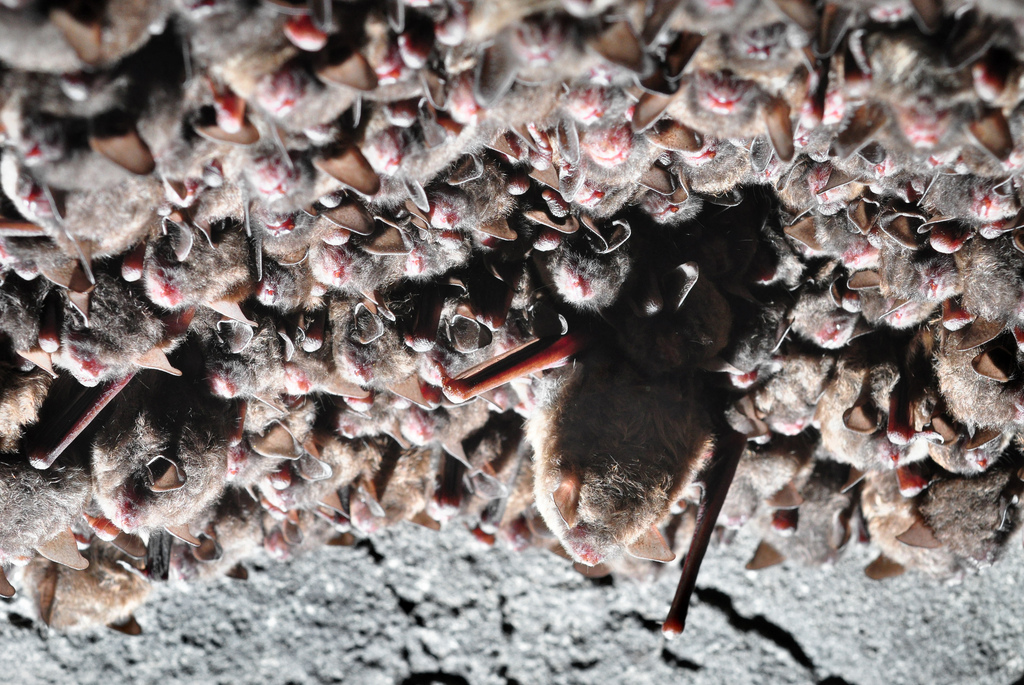Special delivery! See our visiting baby camels (Dec. 6–19) and yaks (Dec. 20–Jan. 5) this holiday. Learn more
Science News
Scary Bats
October 28, 2010

It’s almost Halloween, bwahahahaha. Seems like a good time to talk about bats.
Bats are not scary-- in fact, what’s not to love about them? Echolocation, mosquito-eaters, they’re mammals and even kind of cute. (Well, maybe not this newly discovered tube-nosed fruit bat.)
But wait, there’s more. Recent research shows that their flight is much more complicated than that of birds and insects. Discover has a great online video demonstrating the process. And bats’ flight could inspire future aerospace technology design, according to the New York Times:
Further study of bat wings could help aerospace engineers develop tiny autonomous airplanes that are as flexible and acrobatic as bats… Today’s aircraft are large and have stiff wings, more similar to birds than to bats.
Other current research shows that bat echolocation goes beyond hunting—it’s also used to identify other bats.
More recent news about bats is sadly very scary. As cold winter weather begins to arrive, scientists are incredibly concerned about the further spread of White Nose Syndrome (WNS), caused by a fungus, that has killed over one million bats since 2006 in the eastern US. Current research suggests that the fungus disrupts the bats’ hibernation, causing them to awaken early, behave oddly, and lose critical fat reserves, resulting in death. One particular species, the little brown myotis, could quickly become extinct in some areas.
Eastern caves are being shut to stop the spread of the fungus. Though it travels from bat to bat, humans likely spread WNS, as well. It is possible that humans brought the syndrome to the US, since the fungus is found in European caves (European bats are not affected by WNS).
Because of the number of insects bats eat each day (more than half their weight), the effects of life without bats could be very dramatic, especially on agriculture. From a recent Popular Science article:
“Without bats, people are going to end up using more pesticides, there will be more water and soil contamination, more human contamination,” [Boston University researcher Tom] Kunz said.
You can help. Send a message to Interior Secretary Ken Salazar to get more funding for scientists studying and hoping to stop WNS. Build your own bat house to help protect your own bat-neighbors (with instructions from Bat Conservation International).
The world would be a very scary place without bats.